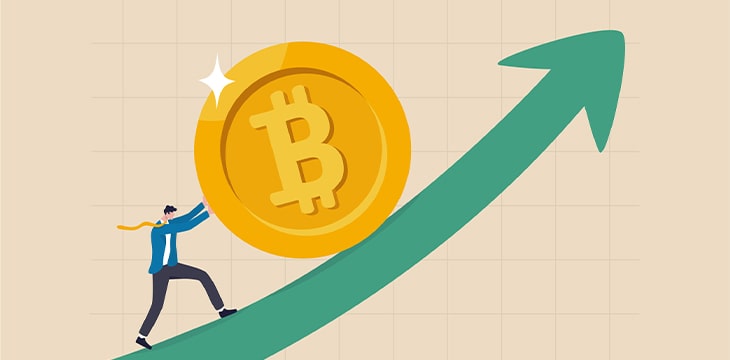|
Getting your Trinity Audio player ready...
|
Bitcoin needs more users.
From 2012-2016, it was the fact that Bitcoin was a new, untested technology that brought in a group of computer scientists to experiment with it. From 2016-2018 it was the proliferation of digital currencies, the rapid rise in their prices, and the advent of many new digital currency exchanges that attracted an audience of speculators. From 2018-2020 it was a bit quiet, but then, DeFi summer took place, and then shortly afterward, and more importantly, NFTs took the world by storm, which prompted several individuals that had never used a blockchain app or service before to download a wallet and buy whatever coin or token they needed to purchase NFTS.
In hindsight, it’s not a surprise that events like this lead to various bull markets, and “number go up.” On blockchain protocols, a growing number of users, developers, apps and services, and user activity on a platform are positive metrics that lead to success and an increase in value.
But now, it seems like every blockchain protocol and digital asset ecosystem is experiencing a lull in both user activity and development. So what will be the catalyst that gets individuals to create a digital asset wallet for the very first time or to top up the wallet(s) they haven’t used in a while so they can experiment with blockchain-native projects once again?
It won’t be an enterprise application…
In the short term, it’s not going to be a B2B application that catalyzes the growth of a blockchain protocol.
The future of distributed ledger technologies will be B2B or B2C, and mass adoption on those levels will be achieved when engineers stop making coins, tokens, and payments in digital assets part of the app or service user experience.
But that’s the future, and right now, we live in the present. At the moment, consumers are driving the adoption of blockchain technologies and digital assets. In the past and at present, they have been attracted to coins, tokens, DeFi, and NFTs because these innovations have given them a chance to increase their wealth by way of speculation. Consumers will always be the first ones to experiment with blockchain and digital currency-based innovations because businesses, governments, and regulators are laggards.
Businesses, governments, and regulators have processes and systems that have worked for decades, sometimes centuries, and they consider these traditional systems safe, reliable money makers for their agencies and departments. When something relatively new like blockchain and digital assets come along, businesses, governments, and regulators typically do not believe these new innovations are worth their time and resources until an event takes place that makes them think otherwise.
That being said, recent events have made businesses, governments, and regulators turn their attention to blockchain technologies. Unfortunately, it has primarily been negative events that caused them to do this: such as major digital asset services providers becoming insolvent and filing for bankruptcy, consumers losing loads of money due to these service providers going under, and DeFi exploits that result in consumers having their money stolen.
Although it was the negative events that got their attention, these events made enterprises put blockchain under the microscope. When educating themselves on the technology, they learned and acknowledged that blockchain could positively impact the world, mainly regarding money transfers, payment settlement, digital identity, and systems that benefit from increased transparency.
But still, even with awareness of the positive aspects, a small number of enterprises are just beginning to devote resources to blockchain-based research and development, and many more are not willing to spend time and energy on blockchain yet. It’s becoming clear that most corporations aren’t interested in building blockchain-based solutions from scratch and that they would rather acquire a blockchain-based product that is already in-market or poach talent from a blockchain development company.
Long story short, I have ruled out enterprise applications as the factor that will lead to protocol growth and adoption in the short term.
So what will it be?
In the near future, it will be financial institutions that bring the next audience of new users to blockchain applications. I also believe that this future will be coming much sooner than we think. Why? Because BlackRock, the world’s largest asset manager with $10 trillion under management as of January 2022, has partnered with Coinbase (NASDAQ: COIN) and announced that it had launched a spot BTC private trust. This means that BlackRock will soon begin allocating a portion of its money into digital assets, which will most likely mean institutional and accredited investors that have never owned digital currencies will be giving significant amounts of money to the fund to receive digital asset exposure.
In addition, BlackRock is a leader in its field, so BlackRock making a move into digital assets will give other asset managers confidence that they should be doing the same thing. We are already beginning to see this play out, with the billionaire hedge fund manager Steven Cohen announcing he would be setting up a separate, crypto-focused asset manager to trade spot digital currency and derivatives just days after BlackRock’s initial announcement.
Hedge fund billionaire Steven Cohen is reportedly setting up a separate, crypto-focused asset manager to trade spot cryptocurrencies and derivatives, per CoinDesk.
— unusual_whales (@unusual_whales) August 12, 2022
All of this will result in a gradual increase in the total digital asset market cap, which means that many digital assets will increase in price over time, ceteris paribus.
What about consumer applications?
A new consumer application that gets first-time blockchain users to download a wallet also stands a chance of moving the adoption needle. However, it’s not clear what this would look like just yet. I do not doubt that developers are currently in the lab thinking up the next apps and services that will hit the market, but there is no telling what shape or form they will take. As the latest bull market was coming to an end, it seemed like play-to-earn games were going to be the app that catalyzed protocol growth and new user adoption. Unfortunately, most of these games were launched at a time when the market lost its appetite for most blockchain and digital asset ventures that required coins and tokens. The play-to-earn games that were becoming popular may catch some wind in their sails as the market bounces back, but I believe new applications that have never been seen before are more likely to bring in new consumers since a lot of play-to-earn games had their chance and didn’t go far.
Final thoughts
In summary, I’ve said that we have another round of digital asset speculation coming our way and that it will be arriving in the not-so-distant future. It has been confirmed that financial institutions are going to be allocating client money and percentages of their funds to digital assets, and this will bring new money into the digital asset markets, which will increase the overall market cap and number of players in the industry, two factors that have historically lead to the increase in value of coins and tokens.
The only factor that I can imagine disrupting that trend would be if month-over-month inflation data—the CPI report—in the United States comes in higher than expected within the next six months because if that happened, it would prompt the Federal Reserve to increase interest rates at a pace that the market has not priced in, which would place some selling pressure on equities and risk assets.
A wildcat event that I believe would spur protocol growth at an even faster rate than anticipated would be if a new consumer-facing application or concept hit the market, but right now, an app or service of that nature is not in sight.
And lastly, enterprise and business applications of blockchain technology are inevitable in a variety of industries. However, businesses are risk-averse laggards that aren’t as willing as consumers to experiment with new technology. For that reason, the B2B/B2C future is probably further away than we think. In addition, enterprises aren’t going to want to use coins and tokens, so for blockchain-based business applications to be taken seriously, they are going to truly need to be more efficient than the solutions and operations that already exist, and coins and tokens should not be a part of the experience.
Watch: The BSV Global Blockchain Convention panel, The Future World with Blockchain
https://www.youtube.com/watch?v=v9hDGDoy1mM

 12-13-2025
12-13-2025 





